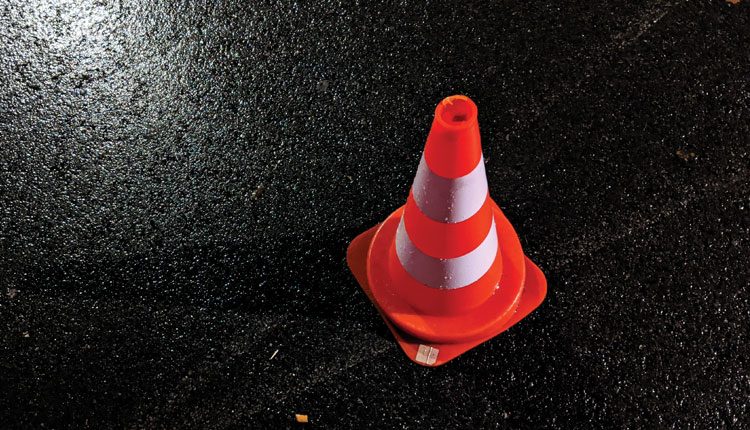With the point of the SafeConnection Expert Panels being to highlight the difference between theory and reality, there is perhaps no better-suited topic than Zero Harm. In theory, all injuries could be prevented, but in reality, it’s not a good bet – especially off the job or while driving. Nevertheless, accepting a level of harm that is above zero seems like giving up. “In high risk industries like mining, manufacturing, etc … someone is bound to get hurt”, is hardly an acceptable statement, and will certainly hinder any improvement in safety. Thus, Larry conducted another series of panels with experts from around the world to find out who has Zero Harm in their mission statement, who doesn’t, and what the results have been so far.
Larry begins the sessions by asking the panelists whether they have Zero Harm in their mission statement or not, and if so, for how long. Before answering, many of the panelists first explain that it is necessary to define what ‘Zero Harm’ is. Anthony Panepinto, PhD (Senior Director Health, Safety, and Environmental Affairs – Procter & Gamble) shares that while P&G does have Zero Harm in their mission statement, it means more than just zero injuries – it “transcends product safety, consumer safety, environmental safety and employee safety”. This line of thinking, he further explains, began in the 1970s when P&G business leaders realized “that the interest of our workers, the interest of our assets, and protection of our consumers really can’t be separated”. Mr. Abdulla Al Marzooqi (Independent Regional HSE Expert, previously Executive Director HSE, ADNOC Group) from the Middle East panel explains that Zero Harm must be a value of the organization which includes no harm to the people, no harm to the environment, and no harm to the community, thus going beyond just safety.
Anthony Panepinto, PhD (Senior Director Health, Safety, and Environmental Affairs – Procter & Gamble) shares that while P&G does have Zero Harm in their mission statement, it means more than just zero injuries – it “transcends product safety, consumer safety, environmental safety and employee safety
Some of the panelist’s companies don’t explicitly have Zero Harm in their mission statements but have similar guiding principles. For example, Mr. Abdulla explains that at ADNOC they have moved from Zero Harm to 100% HSE, which “entails the way we behave, the way we conduct our business – be it in the office, on site, in construction, the aspiration was to make sure that this is a lifestyle and it is 24/7 and it revolves around everybody”. Moreover, some panelists such as Dr. Praveena Dorathi (Head EHS – JLL, West Asia), and Mr. Aravind Appi Raj (Corporate Safety Lead – Mahindra Group), explains that Zero Harm is something they are working towards, but is not yet in their mission statement either. Not altogether surprising for Indian companies, as
So, where did Zero Harm (or something similar) come from for these companies?
Throughout the panels, there were essentially only two different answers. Sometimes, an unfortunate incident at the workplace occurred, such as two fatalities resulting from a fire, as Mr. Ahmed Khalil (Director EHS, Bahrain Petroleum Company) said happened at BABCO, or in the case of P&G – an outbreak of occupational asthma as a result of certain detergent enzymes, which spurred the adoption of a Zero-Harm objective. Otherwise, it was usually an initiative brought on by a “visionary” leader or group of leaders – like Michael Cooke of ABB who standardized Zero Harm globally within the company, according to Ed Stephens (Global HSE/SA Audit, Assurance & Senior Lead Investigator – ABB), or as also was the case with Ian Thorpe (Sr. VP – EHS) who brought in the “Zero Incidents and Injuries” program to Mittel Energy in India. There was also one example from the largest aluminium smelting operation in the world, where they “inherited it”, as Mr. Salman (VP HSE – EGA) put it. “Zero Harm was part of the ethos from day one, it was carried over from the people who built the plant.”
Mr. Shekhar Dongre (CEO, Divya Media Publications) shares that he thinks only about 20% of companies in India have Zero Harm in their mission statement, but that in the last 10 years he has seen a real increase in awareness for human safety, suggesting that percentage will likely rise.
Nevertheless, what listeners and Larry really wanted to know, was…did it work? Did the people buy into it, did it help in terms of actually getting to zero, and would you recommend it? The answer was yes and no. Unanimously, all the panelists agree that working towards Zero Harm is definitely helping reduce incident rates across the board. However, everyone also understands that maintaining zero harm is statistically impossible. Even at a company like P&G, with some of the lowest incident rates for a company of that size in the world, there are occasional SIFs and recordables. Anthony puts it well: “Are we perfect? Absolutely not. We don’t achieve 0, but we remind people that our value is to do everything we can to keep the supply chain and our people resilient and safe”. Or, as Mr. Abdulla says, “are we there 100%? No. Are we working towards that, are we creating the culture that will protect our people, environment, and community? Yes.” As a company that works with many contractors, he explains that annually they rate the companies the way a financial risk company would – with the aspiration that they move up the ladder (towards 10) every year. “If you are continually moving up the ladder”, Mr. Aravind says, “then you can dream of having a Zero Harm company”.
Mr. Aravind explains that at his workplace, “Zero Harm is really helping. People have to be aligned to the goal, so we have defined 10 stages with 10 being the best and 1 being the worst. as your incident rates get below 1.0 or less, the signals you rely on to get those rates that low also change, so you have to learn to look at these leading and lagging indicators in a different way.
But what is stopping companies from actually reaching zero (other than statistical improbability due to regression to the mean)?
Mr. Salman Abdulla shares that often we see the graph coming down and down until it hits zero… but then it always bounces back up. He shares that HSE practitioners will often explain this by saying something like “an incident is bound to happen in this industry”. But, when studied deeply a pattern emerges where somehow, inadvertently, some of the safety resources are taken away, and injuries start happening again. “When your focus is on letting people go or market conditions, the frequency rate goes up”, he says. Thus, we cannot only look at the shop floor but also the top floor and recognize the impact that senior leaders’ decisions – whether they seemingly pertain to safety or not – have on the bottom line. To this end, Ed also explains that “as your incident rates get below 1.0 or less, the signals you rely on to get those rates that low also change, so you have to learn to look at these leading and lagging indicators in a different way.”
So, it appears that Zero Harm is more than just another slogan or KPI – it needs to be a “deeply embedded value” in each employee and the whole organization, even if maintaining zero long term is improbable. As Larry says, “if you want your employees to take safety home, or to think that driving safety is really important – that’s almost an impossible message or communication challenge if your goal was only a 30% decrease in recordable injuries.” Thus, zero harm helps to eliminate that discrepancy, by showing employees that you care about them, their families, the community, and the environment – 24/7.

Website: http://asia.safestart.com

